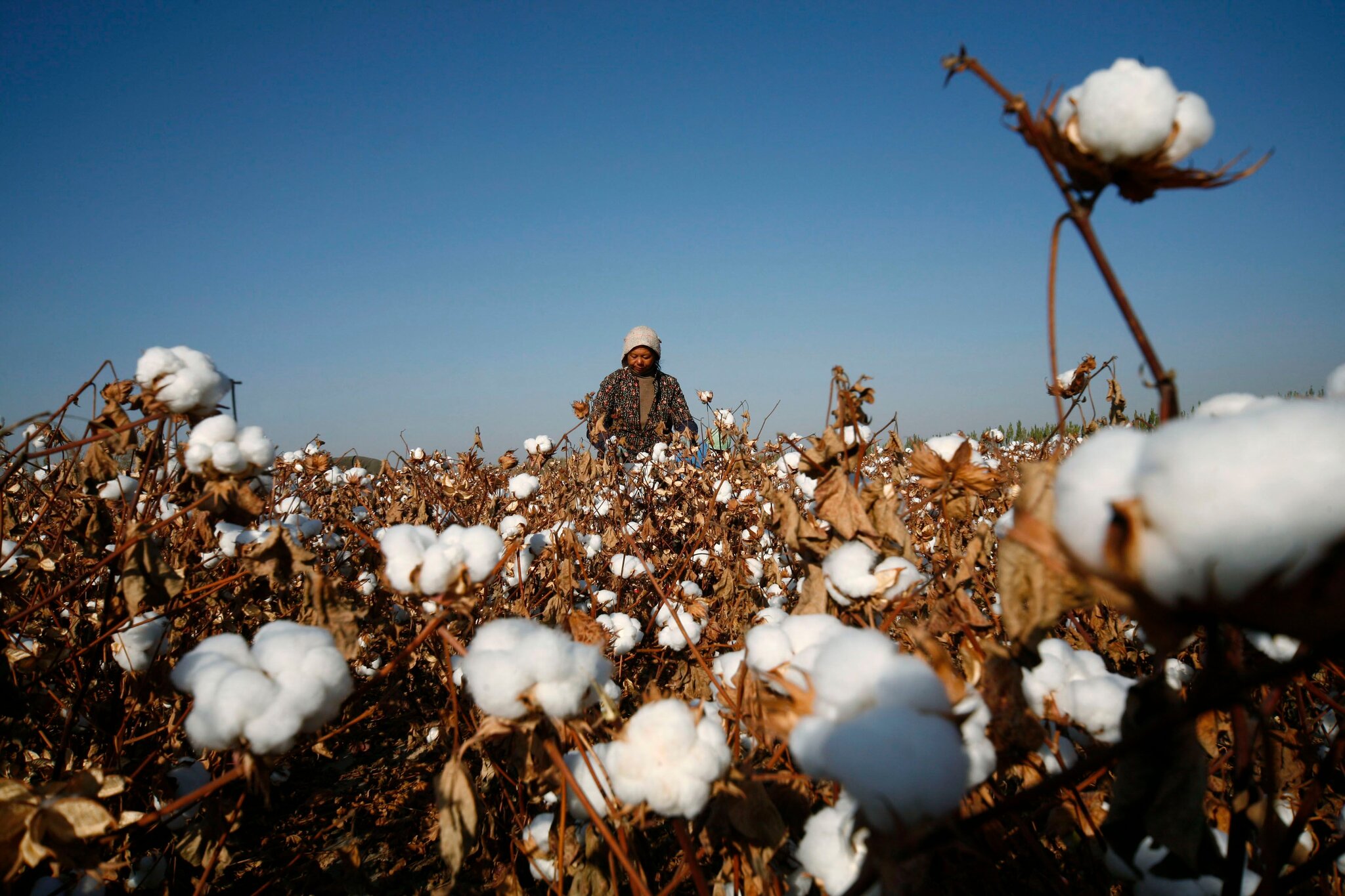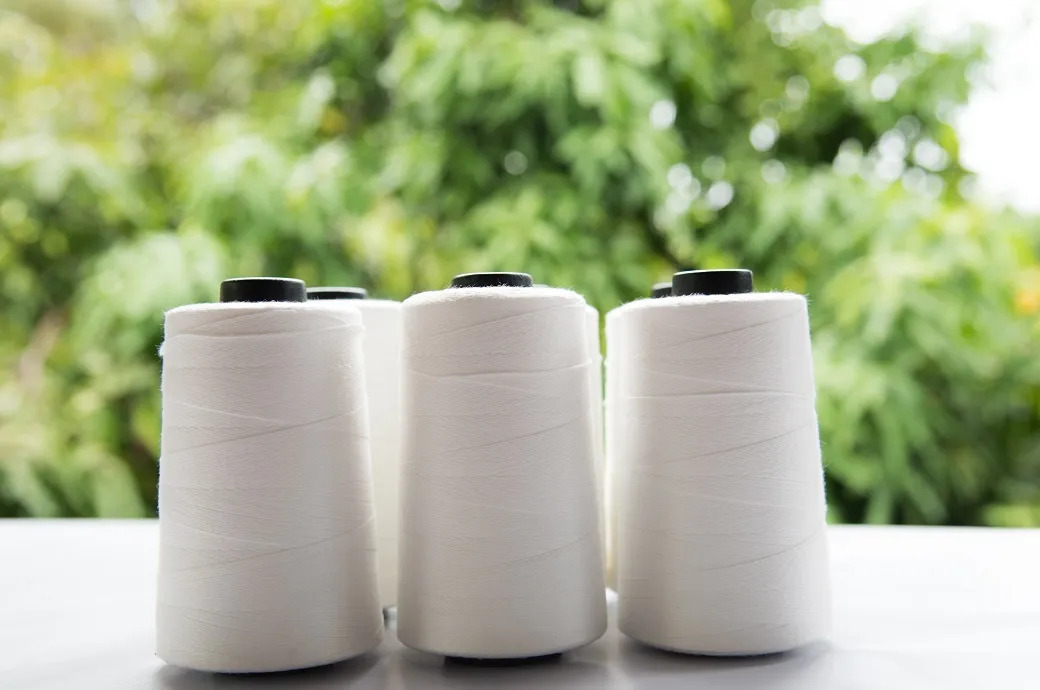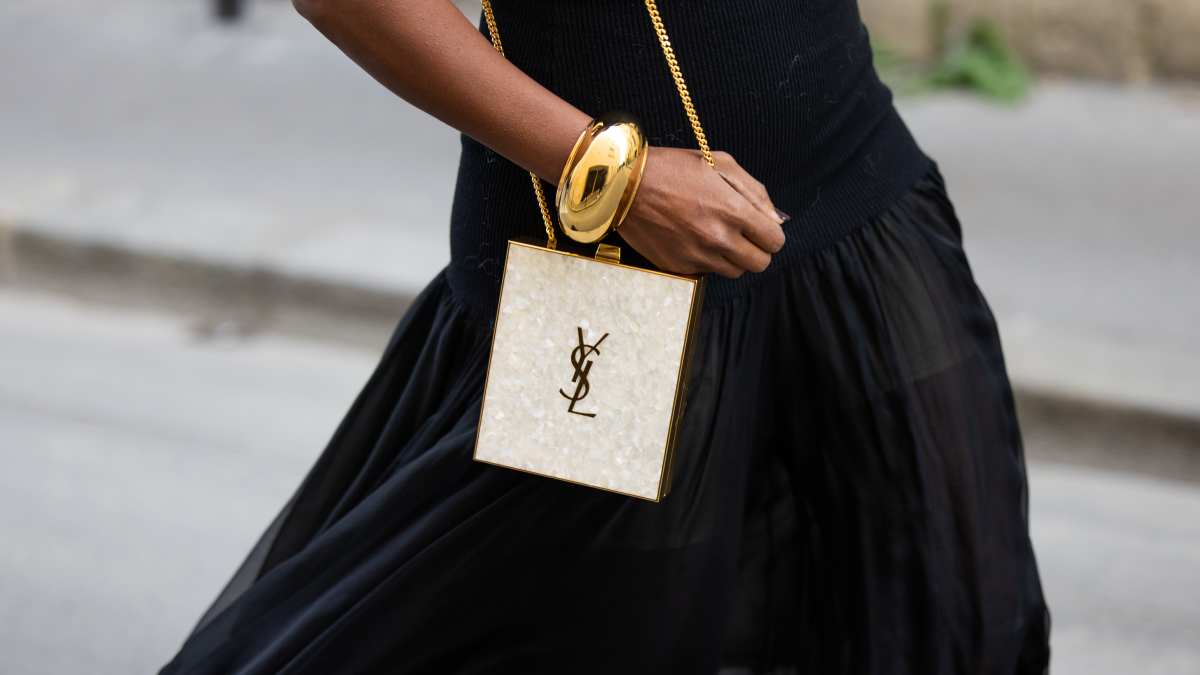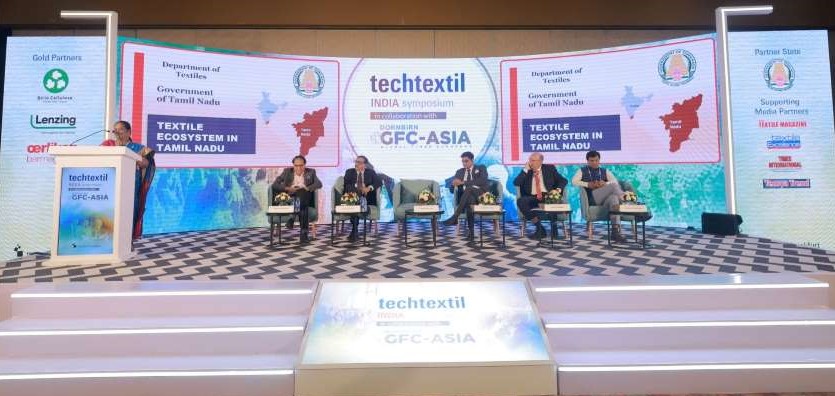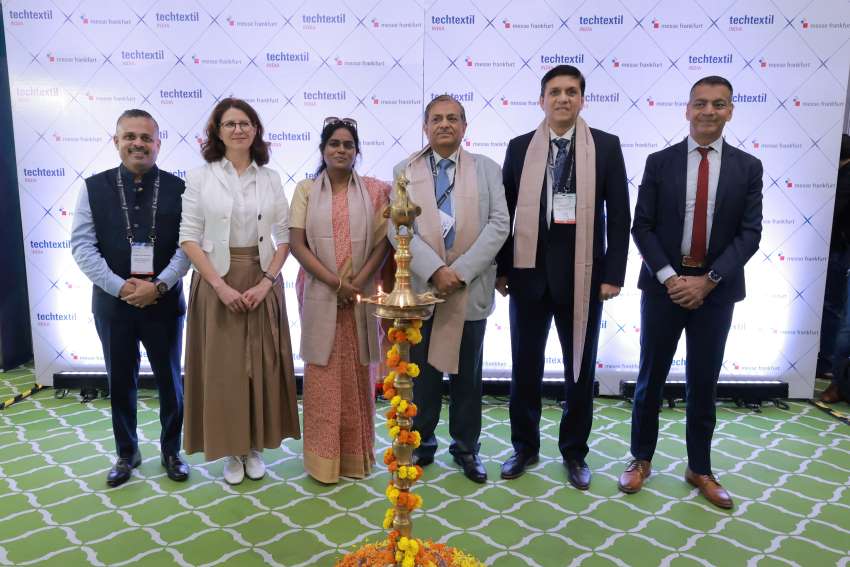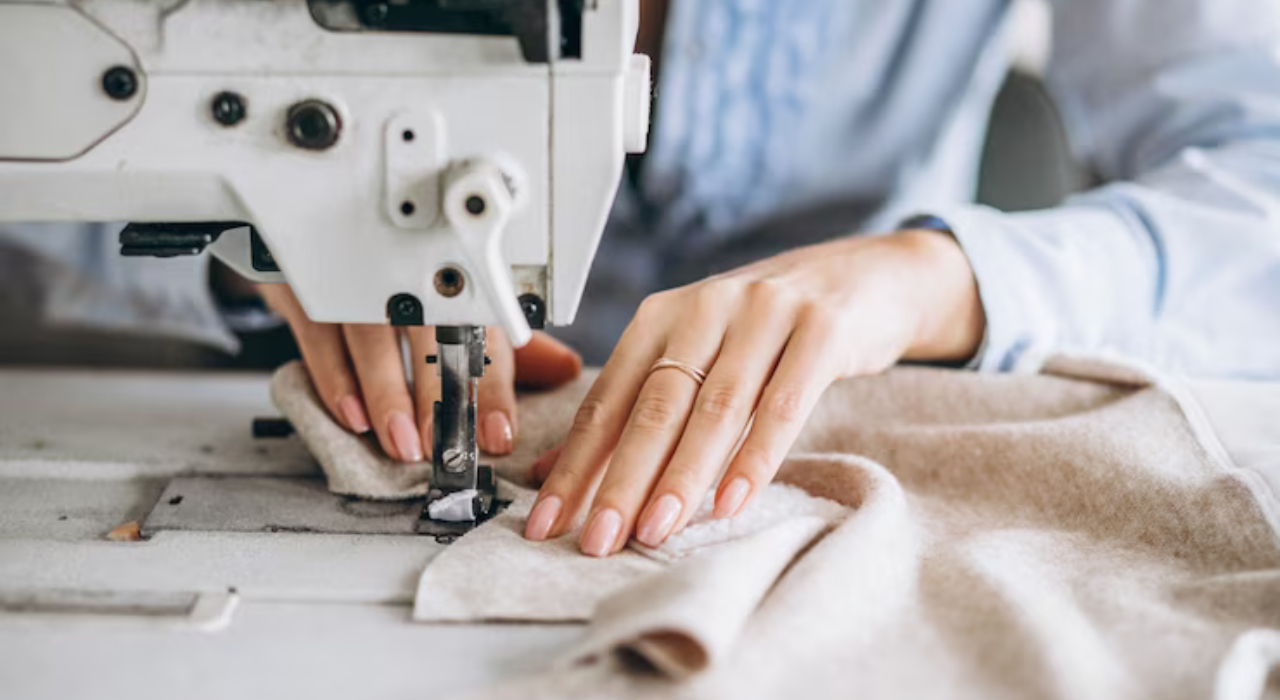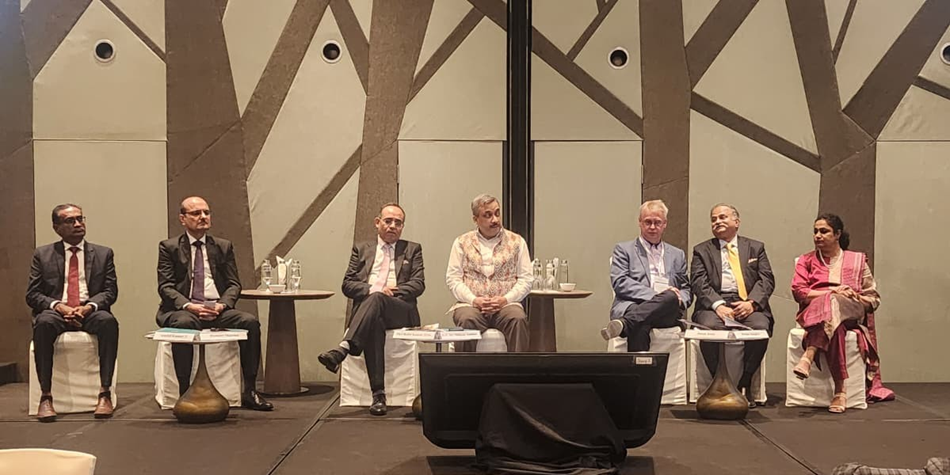FW
Global footwear, apparel, and accessories business Deckers Brands announced a 9.1 per cent Y-o-Y rise in net sales during Q2, FY26, powered by double-digit growth from its flagship brands, Hoka and Ugg. Despite the strong quarterly performance, the company's shares slipped after its full-fiscal 2026 sales forecast landed below analysts' predictions.
For the quarter ended September 30, Hoka's net sales increased by 11.1 per cent to $634.1 million, compared to $570.9 million a year prior. The net sales of Ugg's grew by 10.1 per cent to $759.6 million, compared to $689.9 million. In contrast, net sales for the company’s ‘other brands’ segment declined by 26.5 per cent to $37.2 million.
Overall wholesale net sales of Deckers Brands expanded by 13.4 per cent during the quarter while direct-to-customer (DTC) net sales contracted by 0.8 per cent. Regionally, international net sales increased sharply by 29.3 per cent, while domestic (U.S.) net sales decreased by 1.7 per cent. The company’s financial health improved slightly, with the gross margin rising to 56.2 per cent.
The double-digit growth delivered by Hoka and Ugg in the second quarter, reflects strong performance and international momentum for these brands, says Stefano Caroti, President and CEO, Deckers Brands’ Innovative products and a ‘best-in-class operating model enablesthe company to achieve its full-year outlook, he adds.
For the full FY26, Deckers Brands expects Hoka to grow by a ‘low-teens percentage’ and Ugg to grow by a ‘low-to-mid-single-digit percentage.’ The business projects its gross margin will be approximately 56 per cent and its operating margin will be around 21.5 per cent.
Calvin Klein has introduced a new clothing take-back and recycling program-Re-Calvin- in the United States to simplify the clothing disposal process for its US customers and reduce textile waste.
Launched by the PVH Corp-owned brand, this complimentary initiative helps customers extend the life of pre-loved apparel, shoes, and accessories - from any brand - through donation. Calvin Klein partnered with Trove, a leader in branded resale and customer trade-in, and Debrand, a sortation and circular logistics expert, to power the new program.
Re-Calvin stands out for accepting nearly all apparel categories, including notoriously difficult-to-recycle items like intimates, such as bras, swimwear, and underwear. The take-back program ensures used items are recycled, downcycled, or responsibly disposed of, only using waste-to-energy processes when other options aren't viable.
The program makes circularity more accessible to the brand’s customers and delivers alternative uses for pre-loved items, says David Savman, Global Brand President, Calvin Klein. US customers can participate by visiting calvinklein.us/re-calvin to print a free shipping label and mail in their items. Once received, items are processed according to Calvin Klein’s standards and routed through the Reuse, Recycling/Downcycling and Responsible Disposal pathways:
The Re-Calvin program is powered by Trove’s new Take-back Plug-In, a technology solution that integrates directly into Calvin Klein’s existing US website. This plug-in enables the brand to manage item intake, routing, and transparency at scale while supporting the multi-brand, complex categories accepted by Re-Calvin.
Re-Calvin marks the first implementation of Trove’s new Take-back Plug-In program, notes Terry Boyle, CEO, Trove. With this launch, Calvin Klein shows how technology can make responsible choices simple for every customer, accepting items from any brand and across all categories, including intimates, to help keep more textiles in circulation.
Calvin Klein joins other major retailers like Carhartt, Michael Kors, and Patagonia in utilizing Trove's expertise for their resale and circularity initiatives.
Bangladesh's RMG exports to the Netherlands increased by over 21.21 per cent to $2.08 billion in FY24-25 from $1.72 billion in the previous year. As per the Export Promotion Bureau, this substantial growth was primarily fueled by the strong performance of the country's apparel sector.
Within the apparel category, knitwear exports saw a steep rise of 31.69 per cent, reaching $1.21 billion, up from $926 million a year earlier. Woven garments also showed solid growth, increasing by 9.04 per cent to $879 million, compared to $797 million in FY2023–24.
Beyond clothing, other notable exports included textiles and used clothing ($50 million), footwear and related products ( $96.75 million), headgear ($7.35 million)
Exporters and analysts largely credit this sustained growth to several factors: improved product quality, better supply chain management, a greater focus on sustainable production, consistent timely delivery, and enhanced product diversification.
To maintain this current momentum, industry experts emphasize that Bangladesh needs to strategically pivot toward high-value sectors. This includes areas like pharmaceuticals, ICT services, and processed food exports.
Experts also highlighted the necessity of reducing dependence on garments to successfully expand the market in the Netherlands. They recommend exploring the high potential of the leather industry, while strictly ensuring compliance with international environmental and labor standards.
The Netherlands is a significant investor in Bangladesh. Data from the Bangladesh Bank shows, the country invested approximately $303 million in 2022, accounting for 8.7 per cent of Bangladesh’s total foreign direct investment (FDI).
In a development favorable to Bangladesh, a new tax treaty between the two nations now permits Bangladesh to impose a 10 per cent withholding tax on technology and service payments originating from the Netherlands.
The 3rd Myanmar International Textile & Machinery Fair is scheduled to be held over three days in December, according to an announcement from the Myanmar Garment Manufacturers Association (MGMA).
The event will run from December 5-7, 2025 at the Yangon Convention Centre (YCC) in Yangon. The fair aims to foster long-term economic relationships and explore cooperation opportunities between China and Myanmar in the textile and garment industries, as well as to strengthen ties between Myanmar and ASEAN member countries. Ultimately, the event aims to drive development within Myanmar’s vital garment sector.
The MGMA has confirmed that the exhibition will be a one-stop-shop showcasing essential products and materials for the garment industry. This includes a wide array of items such as textile products and machinery from both China and Myanmar, offerings from local MSMEs (Micro, Small, and Medium Enterprises) and Made in Myanmar products, sewing motors, textile accessories, and raw materials, clothing tags, pricing tags, printing and trim accessories, and printing and machinery for producing designs and patterns.
The fair will feature a robust schedule of side events including panel discussions on sector development, exhibitions of traditional Myanmar, Chinese, and ASEAN costumes, CMP (Cut-Make-Pack) and local brand fashion shows, dedicated business matching sessions for exhibitors, and various industry-related seminars.
Parvinder Kadyan, Managing Director, Aadi Sustainability Solutions and Chairman of the Global Alliance for Textiles Sustainability (GATS), has been named to the Meaningful Business 100 (MB100) for 2025.
The MB100 is a global initiative that recognizes 100 leaders annually who successfully blend profit and purpose to advance the UN Sustainable Development Goals (SDGs). The 2025 cohort features innovators from 39 countries who are transforming diverse industries, including circular economy, fashion, and climate tech.
Kadyan was recognized for his efforts in promoting sustainability and circularity with cost neutrality within India’s textile sector. Through GATS and the India Denim Deal Hub, he is uniting recyclers, mills, brands, and policymakers. This collaborative approach aims to prove that circularity can only succeed through collective action across the value chain.
His flagship initiative, Recyclr, is set to establish India’s first EPR-ready, zero-waste denim factory. This facility will feature full traceability and footprint mapping from textile waste all the way to finished jeans. The project serves as a clear model demonstrating how decarbonization can be integrated directly into a viable business case.
Kadyan’s inclusion in the MB100 is a significant moment for India's textile industry, highlighting that the nation is now leading the global movement for sustainable, circular, and equitable fashion, extending its strength beyond just manufacturing volume.
Sri Lanka's apparel exports saw modest year-over-year growth in September 2025, as per a report by the Joint Apparel Association Forum (JAAF). This rise was driven by stronger sales in the European Union (EU) and other markets, which compensated for declines in shipments to the United States (US) and the United Kingdom (UK).
While the monthly figures were lower than those for August, exports for September 2025 reached increased by 1.58 per cent to $403.01 million, compared to $396.73 million in September 2024. Exports to the US declined by 4.71 per cent while those to the UK lowered by 15.06 per cent.
Meanwhile exports to the EU increased by 10.75 per cent with shipments to other destinations rising by 19.49 per cent
Total apparel exports from January to September 2025 increased by 6.83 per cent to $3,798.25 million as against $3,555.54 million recorded during the same period in 2024.
Exports to the US grew by 1.73 per cent to $1,461.02 million. The EU (excluding the UK) recorded strong growth of 14.24 per cent, reaching $1,173.21 million. Exports to the UK rose by 2.31 per cent to $533.73 million while exports to other markets expanded by 10.45% to $630.29 million.
Demand in some traditional markets remains inconsistent, Sri Lankan exporters have shown ‘remarkable adaptability through efficiency, innovation, and market diversification, notes. JAAF. The positive cumulative growth highlights the strength and competitiveness of Sri Lanka’s apparel sector even amid global headwinds, states the association
The JAAF reaffirmed its commitment to collaborating with the Government of Sri Lanka and other industry stakeholders to align policies, support small and medium manufacturers, and maintain the industry's status as a reliable, ethical, and future-ready sourcing destination.
UK’s definitive showcase for Home, Gift, and Fashion, Spring Fair will return to the NEC Birmingham from February 1-4, 2026.
The 2026 edition promises a ‘new era’ with an expanded footprint, a re-energized visitor experience, and a bold new program of content and networking, cementing its status as the most influential trade event in British retail.
Visitors can expect immersive, sensory, and beautifully designed feature spaces alongside an immense lineup of over 1,200 exhibitors, with 38 per cent of the products being exclusive to the show. The event remains the largest global showcase for the gift, home, and fashion sectors, allowing buyers to explore over 1 million products across curated destinations.
The event will house exclusive zones for Gift, Home, Living & Décor, The Summer House Edit, Christmas, Festive & Floral, Greetings, Party & Celebration, Beauty & Wellbeing, Fashion, and Everyday.
The 2026 edition of the event will also launch Fashion at Spring Fair, a brand-new destination dedicated to style, creativity, and trend-driven sourcing. This new hub consolidates apparel, accessories, and jewelry under one roof, directly responding to buyer demand for a fashion-first showcase. It will featured exhibitors like Urban Bliss, Lighthouse Clothing, and Girl in Mind, alongside jewelry and accessories brands like Scream Pretty, Bill Skinner, and Ayala Bar.
The Fair continues to champion emerging talent through its New Business Pavilions, the #SBS Village (in partnership with Theo Paphitis), and the Gift of the Year Showcase. Thousands of leading brands are already confirmed, such as Coach House, My Gifts Trade, Hill Interiors, Joe Davies, and Ty UK, ensuring a comprehensive view of the products that will define the 2026 retail year.
Fashion brand Guess organized the 2025 edition of its global conference, ‘One World, One Brand’ in Marrakesh, Morocoo.
The brand’s 8th annual convention united 800 guests from over 100 countries for a three-day schedule packed with conferences, workshops, gala dinners, cocktail receptions, dazzling fashion showcases, and exclusive VIP experiences.
The conference culminated with a spectacular, exclusive fashion show beneath the desert stars at the iconic El Badi Palace, a stunning example of 16th-century Moroccan architecture. The show debuted the Guess Spring/Summer 2026 and Pre-Fall 2026 collections, showcased select iconic archive pieces, and unveiled a special Marciano by Guess capsule collection created just for Marrakesh.
More than just a corporate gathering, ‘One World, One Brand’ is an opportunity to bring together people from across the globe to share ideas, celebrate our creativity, and immerse ourselves in the unique lifestyle and values that define Guess, says Paul Marciano, Co-founder and CEO.
The conference was attended by Guess employees, global business partners, and a roster of high-profile international talent, including Italian influencer Chiara Ferragni, German model and entrepreneur Leonie Hanne, French creator Lea Elui, Irish media personality Maura Higgins, Indian actress Krystle D'Souza and Filipino actress Andrea Brillantes
Guess Inc. designs, markets, distributes, and licenses a lifestyle collection of contemporary apparel, denim, handbags, watches, eyewear, footwear, and other related consumer products. The brand’s products are distributed through branded stores, department stores, and specialty stores worldwide. As of August 2, 2025, Guess directly operated 1,062 retail stores across Europe, the Americas, and Asia, with partners and distributors operating an additional 527 retail stores worldwide, reaching approximately 100 countries globally.

In the quiet industrial corridors of Ethiopia’s Hawassa Industrial Park, rows of sewing machines with local workers assemble garments destined for global retail shelves, many of them carrying ‘Made in Ethiopia’ tags, but backed by Indian capital, expertise, and supply chains. This scene captures a profound shift underway in India’s apparel export story. Confronted by rising costs, tariff headwinds, and intensifying competition from regional rivals, a growing number of Indian textile and garment exporters are looking beyond traditional manufacturing hubs and planting roots in East Africa.
From KPR Mills and Raymond to Arvind and Gokaldas Exports, Indian firms are exploring or expanding their African footprint, drawn by lower labor costs, preferential trade agreements, and investor-friendly industrial ecosystems. The move signals a new phase in India’s textile evolution one that blends pragmatism with strategic foresight.
Shrinking margins and global trade shifts
For decades, India has been one of the world’s largest apparel exporters, supplying to retail giants like H&M, Zara, and Gap. Yet, in recent years, its competitive edge has dulled. The country’s labor costs have nearly doubled over the past decade, with average monthly wages in apparel clusters such as Tirupur and Bengaluru reaching $130-$150. In contrast, Ethiopian workers earn as little as $60 a month a gap that can decisively alter margins in a price-sensitive global market. “Cost efficiency is no longer a matter of operational discipline it’s a matter of survival,” says an apparel industry executive based in Coimbatore.
Table: India’s apparel exports (FY25).
|
Indicator |
Value/growth |
Source/Period |
|
Apparel exports |
$11.3 billion |
AEPC, Jan 2025 (Apr–Dec FY25) |
|
Year-over-Year (YoY) Growth |
+11.6% |
AEPC, Jan 2025 |
|
Share of Textiles & Apparel in Total Exports |
7% |
Ministry of Commerce, FY25 |
|
Top Export Markets |
US (27%), EU (23%), UAE (9%), UK (6%) |
AEPC, FY25 |
|
Target for 2030 ("40 by 30") |
$40 billion |
AEPC Vision Document |
|
Top Apparel Clusters |
Tirupur, Bengaluru, Noida, Ludhiana, Ahmedabad |
N/A |
Adding to the strain are tariff disadvantages. Bangladesh, India’s closest competitor, enjoys duty-free access to the European Union and the US through trade agreements like the EU’s GSP+ and the US GSP. Indian exporters, by contrast, face duties as high as 10-28 per cent, which erode competitiveness.
The situation worsened in 2025, when the US imposed a 50 per cent tariff on apparel imports from India, a move that sent shockwaves across the industry. Sivaramakrishnan Ganapathi, Managing Director of Gokaldas Exports was quoted saying in Bloomberg “If these duties stay, we have no choice but to look elsewhere.”
Domestic inefficiencies have compounded the challenge. Despite policy efforts, exporters cite slow incentive disbursement, inconsistent power supply, and labor attrition as major bottlenecks. “Factories often take two years to reach even 50 per cent utilization,” notes an AEPC member. “By that time, global demand cycles have already shifted.”
The pull, East Africa’s emerging edge
Against this backdrop, East Africa, especially Ethiopia and Kenya is emerging as an attractive alternative for Indian manufacturers seeking both cost relief and trade advantages.
Governments in the region are aggressively courting foreign investors, offering a combination of tax holidays, customs exemptions, and ready-to-use factory infrastructure. Industrial parks such as Hawassa (Ethiopia) and Athi River (Kenya) have become showcases for this model, promising lower setup costs and quicker turnaround times.
“The ‘plug-and-play’ approach cuts down capital expenditure by up to 40 per cent,” says a senior executive at KPR Mills, which established its African unit to supply European buyers. “The biggest draw, however, is duty-free access to major markets.” Under the African Growth and Opportunity Act (AGOA), apparel produced in eligible African countries enters the US market duty-free. Similar trade privileges exist with the European Union under the Everything But Arms (EBA) arrangement.
Table: East Africa vs. India: competitive analysis in the apparel sector
|
Factor |
East Africa (Ethiopia/Kenya) |
India (Comparative position) |
Competitive impact on India |
|
Monthly Labor Cost (Avg.) |
$55–65 |
$ 130-150 (Approx 150% higher) |
Massive Cost Disadvantage: East Africa offers a significantly lower wage base, making it a highly attractive, cost-leader destination for high-volume, low-margin garment assembly. |
|
Duty Access to US |
0% tariff (under AGOA) |
16-32% tariff (standard MFN rate) |
Immediate Price Gap: Creates a direct 16-32% final price advantage for East African products, severely limiting India's price competitiveness in the largest global market. |
|
Duty Access to EU |
0% tariff (under EBA/GSP) |
9-12% tariff |
Significant Tariff Barrier: Grants East Africa cost-free entry, undermining India's efforts to grow market share in the EU without a Free Trade Agreement (FTA). |
|
Corporate Income Tax Holiday |
Up to 10 years (Ethiopia) |
5 years (under the PLI Scheme) |
Superior FDI Incentive: The longer tax holiday offers a more stable, attractive long-term incentive for global brands and foreign investors (including Indian companies) to set up operations. |
|
Industrial Infrastructure |
Plug-and-play industrial parks (Hawassa, Bole Lemi) |
Fragmented clusters with some large, integrated units |
Faster Entry & Scalability: Integrated parks simplify logistics, utilities, and customs clearance, offering a quicker and less complex setup for buyers looking to diversify sourcing. |
|
Cotton Sourcing Potential |
3 million ha suitable; <10% under cultivation |
Cotton shortfall due to climate and acreage decline (High MMF focus) |
Future Vertical Integration: East Africa has the arable land to establish a fully integrated supply chain (from cotton to garment), which would counter India's existing backward integration strength and reduce their reliance on imported fabric. |
|
Response from Indian Exporters |
N/A |
Investing in and expanding manufacturing units in Kenya and Ethiopia. |
Co-opting the Advantage: Indian exporters are mitigating the tariff barrier by leveraging their capital and expertise to operate from East Africa, using it as a manufacturing platform for US/EU-bound orders. |
For Indian exporters, this effectively neutralizes their big disadvantage allowing them to compete head-on with Bangladesh and Vietnam on price and access. Africa also offers another crucial advantage: raw material availability. The continent produces about 10 per cent of global cotton, much of it underutilized. Coupled with a young and growing labor force, this gives manufacturers the potential to build vertically integrated operations, from spinning to stitching.
India’s footprint expands
A handful of Indian textile majors have already made decisive moves.
KPR Mills, for example, one of Tirupur’s largest exporters, set up a factory in Ethiopia to take advantage of AGOA benefits and reduce labor costs. The company’s leadership has called the move strategic and inevitable in a world driven by trade differentials. Similarly, Raymond Ltd, a household name in Indian textiles, invested nearly Rs 130 crore to establish a jacket manufacturing plant in Ethiopia, tapping into the country’s investor-friendly regime. And Arvind Ltd and Best Corporation have initiated operations or sourcing partnerships in East Africa.
Meanwhile, Gokaldas Exports, facing tariff shocks in its core US markets has explicitly announced its intention to expand production capacity in Africa. “To serve our customers competitively, we need to manufacture where trade access aligns with demand,” Ganapathi said.
This suggests a systematic recalibration rather than a short-term response a sign that Africa may soon become an integral part of India’s apparel export network.
Following China’s footsteps
India’s foray into East Africa isn’t unprecedented. It follows a trail long blazed by China, whose firms began investing in the region over a decade ago as part of Beijing’s ‘Go Global’ strategy. Chinese textile giants like Wuxi No. 1 Cotton Mill and Jiangsu Sunshine Group invested heavily in spinning and weaving operations, supported by large-scale government-backed industrial parks such as Hawassa and Bole Lemi.
The Chinese model is instructive: rather than focusing solely on low-cost labor, Beijing built integrated ecosystems complete with dedicated power lines, water systems, customs offices, and vocational training centers. “They didn’t just build factories; they built value chains,” notes a Delhi-based trade analyst. “India’s approach so far is more transactional to replicate China’s success, it must think long-term.”
That means not just producing garments in Africa, but developing local skills, investing in cotton farming, and creating logistics infrastructure that reduces dependency on imports.
Africa’s growing pains
Despite the optimism, operating in Africa comes with challenges. Productivity levels remain low, with factory efficiency often at 40-45%, according to industry reports. “The workforce is eager but inexperienced,” says an Indian production manager overseeing a unit in Kenya. “It takes months of training before we reach acceptable productivity levels.”
Infrastructure, too, is patchy. Transport bottlenecks and customs delays can stretch lead times to 120-150 days, undermining the agility needed for fast-fashion supply chains. Political instability, particularly in Ethiopia, has also disrupted operations at times. Still, Indian investors remain cautiously optimistic. “These are teething troubles,” says a senior textile executive. “The fundamentals cost, access, and demographics are in Africa’s favor.”
What this means for India’s apparel future
Rather than signaling a retreat, the shift to Africa reflects a diversification of India’s apparel industry. Analysts expect exporters to adopt a dual-sourcing model keeping high-value, design-led, and quick-turnaround production in India, while shifting bulk and price-sensitive orders to African bases.
This could, in fact, redefine India’s role in the global apparel value chain. The country may evolve from being a manufacturing center to a hub for design, innovation, and raw material supply, supporting its offshore factories across Africa and Southeast Asia. At a policy level, the trend underscores the urgency for India to secure Free Trade Agreements with key markets. Negotiations with the UK and the EU including the proposed Comprehensive Economic and Trade Agreement (CETA) are being closely watched.
As global apparel trade undergoes tectonic shifts, India’s exporters are proving both nimble and pragmatic. Moving into Africa is not just about chasing cheaper labor; it’s about future-proofing against policy risks, tariff volatility, and evolving consumer timelines. The tags may soon read ‘Made in Ethiopia’ or ‘Made in Kenya’ but behind many of them will be the design rooms, spinning mills, and entrepreneurial spirit of Indian textile firms quietly rethreading their global narrative from Tirupur to the tropics.
Puma has named Ronald Reijmers as its new Vice President- Global Retail. The 55-year-old is set to start his new role on November 1, 2025 where he will oversee the development of the company's full-price and outlet stores across the globe. He will report directly to Matthias Bäumer, Chief Commercial Officer, Puma.
Reijmers brings nearly 30 years of experience in the sports industry, having held senior retail strategy and management positions at Nike, Adidas, and, most recently, Gymshark.
In an effort to accelerate growth and sharpen its focus in a quickly changing market, the sporting goods brand has adjusted its organizational structure. It has split its direct-to-consumer (DTC) business into two distinct divisions: Global Retail and Global E-Commerce.
Having previously led both the divisions, Erik Janshen has decided to leave Puma to pursue new professional opportunities outside the company.
A highly experienced leader with a strong track record across the industry, Reijmers will bring a deep global expertise in retail strategy and operations and help Puma build momentum in it global retail channel, says Matthias Baumer, Chief Commercial Officer. The brand also plans to announce the leader of its Global E-Commerce division in the coming weeks.
In Q2, FY26, Puma’ sales declined by 2 per cent at constant currency rates, coming in at just over €1.94 billion. The company also reported a loss before interest and taxes (EBIT) of €13.2 million.
Given these results, led by Arthur Hoeld, CEO, the brand’s management team projects sales to decline by a low double-digit percentage at constant currency, along with an EBIT loss, for the FY25.

